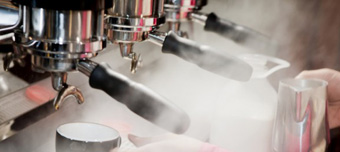 It was a landmark day on the 26th June, as the neutral beam injection heating system broke its previous record for input power, reaching 25 megawatts during four separate pulses. It is the culmination of three years work upgrading the beam system during the 2009 – 2011 shutdown and then commissioning the new system in parallel with a protection system to ensure the new power levels do not damage the vessel.
It was a landmark day on the 26th June, as the neutral beam injection heating system broke its previous record for input power, reaching 25 megawatts during four separate pulses. It is the culmination of three years work upgrading the beam system during the 2009 – 2011 shutdown and then commissioning the new system in parallel with a protection system to ensure the new power levels do not damage the vessel.
The neutral beam injection system is the most powerful of JET’s four heating systems. The concept is similar to the way that a steam jet in a cappuccino maker heats milk: high energy deuterium beams are injected into the vessel, which collide with the plasma particles, thereby heating them. The JET cappuccino maker however has 8 beam lines on each side of the torus, which accelerate particles with voltages over 100 kilovolts. Although only 14 of the 16 beams were used, the resulting power was enough to heat milk for 350 cappuccinos per second!
JET’s barista on the day was of course Italian – session leader Dr Domenico Frigione from the Italian Association ENEA, He was in charge of experiments investigating instabilities at the edge of the plasma known as edge localised modes (ELMs), which expel bursts of energy out of the plasma. The experiments used infrared cameras to measure the heating effect on the wall of the vessel ELMs, especially in the lower part of the vessel, known as the divertor, where the plasma touches the tiles for the purpose of removing waste and contaminants. “The heat load in the divertor is an important consideration for ITER,” said Dr Frigione, “and so special permission was granted to push the wall temperatures to higher levels, around 1200 degrees Celsius.” Experiments explored methods for spreading the heat load, by changing or moving the area of the plasma that contacts the wall, or seeding this area of the plasma with impurities such as nitrogen.
“Experiments like this are a planned risk” said Dr Frigione. “It is difficult to come out of these pulses, the beam power needs to be reduced in steps to prevent us landing too suddenly, but we achieved it safely.”
Source: EFDA



















































































